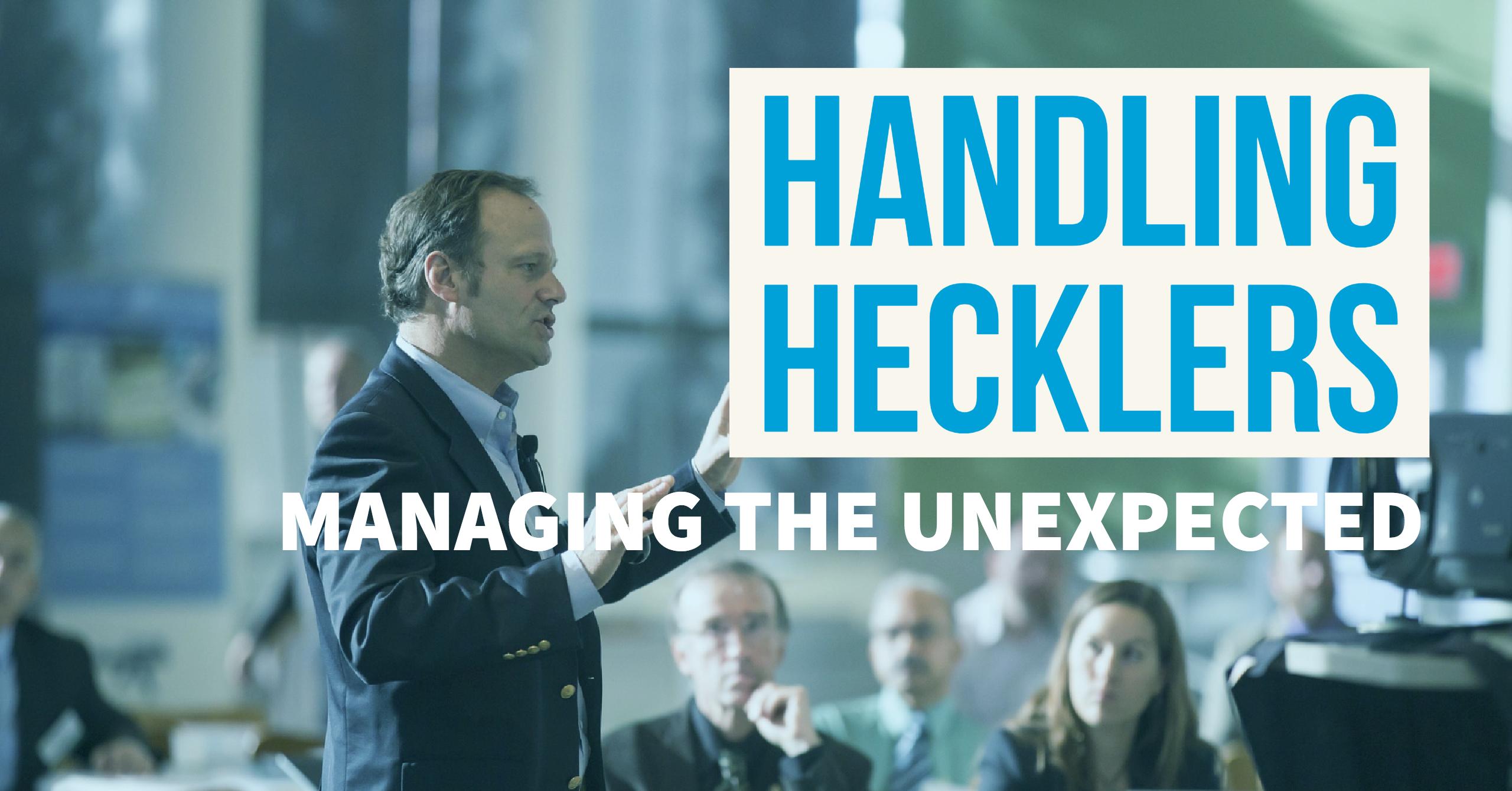
Whether you’re standing in front of an audience of thousands or your colleagues in a meeting, handling a heckler is no fun, but it can be done with aplomb.
In various studies conducted over the years, public speaking has ranked number one as the most feared activity. In some studies, almost 30% of respondents have indicated that they feared public speaking more than death. Jerry Seinfeld may have put it best when he said, “Most people would rather be in the casket at a funeral, than giving the eulogy”.
Since public speaking can encompass delivering a lecture, standing up in class or a meeting to express an opinion, there are any number of communications opportunities that get missed due to fear. In fact, fear of public speaking can have a negative impact on your career and can undermine success in life if you do nothing about it. The good news is that you can do something about your fear.
There are tried and true methods explored in Trips, Sniffs and Nerves and in Body Language that can help you to overcome everything from your hesitation to sweaty palms. However, there are other things that can go wrong that have little to do with your preparation or nerves but can make you reluctant to speak. Although it doesn’t happen often, every once in a while you will come across someone who wants to challenge the authority of the speaker. They may have an agenda of their own and are looking for a forum, they may be holding a grudge. They may simply be cranky. Whatever it is that motivates this verbal bully, you can manage them just as you do other aspects of your presentation.
The first thing that you need to remember is that you are in charge of you and your presentation. There are tips out there for taking on a heckler and perhaps having a battle of wits, but that doesn’t seem like much fun for you if you’re nervous about public speaking and certainly, no fun for the audience unless you’re a professional comedian.
I enjoy public speaking. I happily abandon the stage and walk in and among the audience when presenting. Hecklers don’t phase me and I generally try to incorporate them into the presentation…to a point. If practice makes for a better presentation, then taking on an additional presenter in the middle of delivering is hardly going to improve your performance. Instead, avoid grandstanding and deal with a heckler by taking a deep breath and allowing the heckler to deliver their message. In most cases, the audience will be more annoyed than you are by the interruption and let the heckler know it, but that can only happen if you let them have their airtime and keep your cool. Once they have said their bit and you have responded (to the group, not just the heckler), they are generally prepared to be quiet.
If that’s not the case and they persist in disrupting you or being rude, consider the following tips:
- Acknowledge what they are doing, consider saying, “You’ve made many points or asked many questions.”
- If that isn’t sufficient, then let them know how they are making you feel. This is not an opportunity to be rude, accusatory or judgmental. Try saying, “I’m having a hard time completing my presentation.” or “I’m having a hard time finishing.”
- If the heckler just really wants to keep going no matter what you do, solicit the aid of your audience by asking them through a show of hands what they would prefer, the rest of your presentation or an impromptu presentation by the heckler. If you have been patient and have allowed the heckler to say their piece and have responded, the audience will vote them off the island.
- If you are in a meeting consider thanking them for their input and saying no more or ask them if they would like to continue the conversation privately later.
During the Question and Answer Period
- Challenge a negative premise. The world isn’t always doom and gloom. Worst-case scenarios are interesting, but not the only eventuality. Addressing worst-case scenarios or “what if” questions will typically lead to you saying things better left unsaid.
- Use reflective language to ensure you understand their point and to let them know you were listening, try saying, “So you are saying…” This approach also works if you get a heckler on your blog.
- When you do respond, don’t repeat baiting words – use your own words or risk being quoted later with words you never intended to utter.
- Remember to remain calm yet assertive.
- Don’t speak on behalf of others.
- Keep your own opinion to yourself if you are representing an organization. Any comment you make will be recalled as being organizational. Even if you state it as a “personal opinion”
- If you can’t answer a question, give a reason why you can’t answer and move on. Don’t guess or speculate. Consider saying, “I would rather not speculate and I can’t answer your question.”
- Break up multi-part questions in your answer.
- More than anything, remember that you’re in charge of your reactions.
Have you ever run across a heckler online or in person? How did you manage the situation? Have you ever seen anyone do a great job of dealing with a heckler? What did they do?














